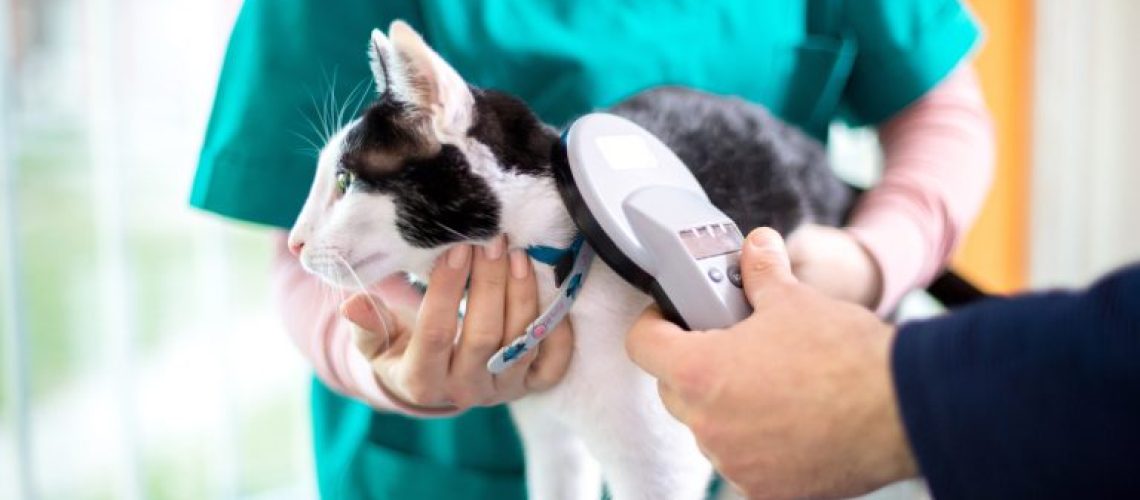Learn about microchips for pets, a small electronic device that helps identify lost animals. Find out why they're important and how they work to reunite pets with their owners.
Key Takeaways:
- There is no scientific evidence to suggest that microchips cause cancer in pets.
- Microchips are generally considered safe and have been used for many years without significant health concerns.
- The benefits of microchipping, such as reuniting lost pets with their owners, outweigh the minimal risks associated with the procedure.
- If a pet develops a tumor near the site of a microchip, it is more likely due to other factors rather than the presence of the chip itself.
- Veterinarians recommend regular check-ups and monitoring for any changes or abnormalities in pets, regardless of whether they have been microchipped or not.
What are microchips and why do pets get them?
A microchip is a small electronic device that is about the size of a grain of rice. It contains a unique identification number that can be read by a special scanner. Pets, such as dogs and cats, get microchipped to provide a permanent form of identification. This helps reunite lost pets with their owners.
When a pet gets a microchip, the veterinarian injects it under the skin, usually between the shoulder blades. The process is quick and does not require anesthesia. Once the microchip is in place, it remains there for the lifetime of the pet.
Why do pets need identification?
Pets can easily get lost or separated from their owners. Collars and ID tags can come off or become unreadable over time. Microchips offer a more reliable way to identify pets because they cannot be easily lost or removed.
How do microchips work?
When a lost pet is found, animal shelters, veterinary clinics, and other facilities use special scanners to check for microchips. The scanner emits radio waves that activate the microchip. Once activated, the chip sends back its unique identification number to be displayed on the scanner's screen.
The person scanning the pet can then use this number to look up the owner's contact information in a database. This allows them to quickly contact the owner and arrange for their beloved pet to be returned home.
How do microchips help find lost pets?
Microchips greatly increase the chances of finding lost pets and reuniting them with their owners. Here's how:
- Permanent Identification: Unlike collars and ID tags, microchips cannot be easily lost or removed. This means that even if a pet loses its collar, it can still be identified using the microchip.
- Wide Availability: Many animal shelters, veterinary clinics, and other facilities have microchip scanners. This makes it easier to check for a chip and contact the owner when a lost pet is found.
- Quick Reunions: Microchips provide immediate access to the owner's contact information. This allows for quick reunions between lost pets and their worried owners.
What should pet owners do after microchipping their pets?
After getting their pets microchipped, owners should ensure that their contact information is registered and up-to-date in the microchip database. This includes providing a current phone number and address.
If any changes occur, such as moving to a new home or getting a new phone number, owners should update their information in the database as soon as possible. This ensures that if their pet ever gets lost, they can still be easily contacted.
Can microchips cause cancer in pets?
There is ongoing debate and concern about whether microchips can cause cancer in pets. While some studies have suggested a potential link between microchips and certain types of tumors, such as sarcomas, it is important to note that the overall risk appears to be very low. The American Veterinary Medical Association (AVMA) states that the benefits of microchipping far outweigh the potential risks.
Benefits of Microchipping:
- Increased chances of reuniting with lost or stolen pets
- Permanent identification that cannot be altered or removed
- Potential for reducing euthanasia rates in shelters
Are there any studies about microchips and cancer in pets?
A number of studies have been conducted to investigate the potential link between microchips and cancer in pets. One study published in the Journal of Veterinary Internal Medicine found a slightly increased risk of sarcoma development at the site of microchip implantation in dogs. However, it is important to note that this study was based on a small sample size and further research is needed to draw definitive conclusions.
What did the studies say about microchips and cancer in pets?
The studies conducted so far have provided mixed results regarding the association between microchips and cancer in pets. Some studies suggest a potential link, while others have found no evidence of increased cancer risk. It is important to consider these findings within the context of overall benefits and risks associated with microchipping.
Do many pets with microchips get cancer compared to those without?
The incidence of cancer related to microchip implantation appears to be very low. While there have been reported cases of tumors developing at the site of microchip implantation, these instances are rare. The majority of pets with microchips do not develop cancer as a result.
Are there safety measures when putting microchips in pets to prevent health risks?
Safety Measures for Microchip Implantation:
- Ensure that a trained and experienced veterinarian or veterinary technician performs the procedure
- Use sterile equipment and follow proper hygiene protocols
- Select microchips that have been tested for biocompatibility
- Monitor the implant site for any signs of infection or inflammation
What signs should pet owners look for if they think their pet's microchip is causing problems?
If pet owners suspect that their pet's microchip is causing problems, they should look out for signs such as persistent swelling, redness, or discharge at the implant site. Additionally, if the pet exhibits unusual behavior or discomfort around the area of the microchip, it is advisable to consult a veterinarian for further evaluation.
How can pet owners keep their pets safe with microchip use?
Tips for Pet Owners to Ensure Microchip Safety:
- Regularly check the implant site for any abnormalities or changes
- Maintain updated contact information with the microchip registry
- Keep a copy of your pet's microchip number and registry details in a safe place
- If changing veterinarians, inform the new clinic about your pet's existing microchip
Are microchips harmful to pets?
The chances of experiencing any health issues from microchips are very low, but the potential benefits are substantial. Thousands of owners have been able to find their lost dogs thanks to microchips, and for that reason alone, the small risk of tumors and negative reactions is outweighed by the positives.
Do pet microchips emit radiation?
Microchips are safe and do not emit any harmful radiation or electricity. They are not toxic and have been implanted in millions of pets worldwide. While there have been two reported cases of microchips being associated with tumors in cats, overall they are considered to be a safe and effective method of identification.
What are the risks of microchipping your dog?
There are indeed dangers associated with microchips for dogs. Numerous cases of tumors have been reported, and multiple studies have documented this. Research spanning from 1996 to 2006 reveals that approximately 8% to 10% of animals with microchips developed cancerous tumors in the location of the implant.
Does microchip have side effects?
A: While adverse reactions to microchips are not common, they do occur. The most frequent issue is when the microchip moves from its original placement. Other problems can include the microchip not functioning properly, as well as hair loss, infection, swelling, or the development of tumors near the implantation site.
Are pet microchips MRI safe?
Animals that have microchips can undergo MRI scans, but the presence of a microchip may cause some distortions in the image. If there is any metal near the area being examined, it could create artifacts that make it difficult to interpret the image accurately. In extremely rare cases, a study may not be able to provide a diagnosis due to the presence of a metallic object inside the animal.
Do microchips affect cats health?
Microchips are completely safe and painless to insert because a beveled needle is used, allowing it to easily slip under the cat's skin. The microchips can be inserted while the cat is awake, and they are typically not noticeable to the cat. Alternatively, the insertion can be done while the cat is undergoing a spaying procedure.

















